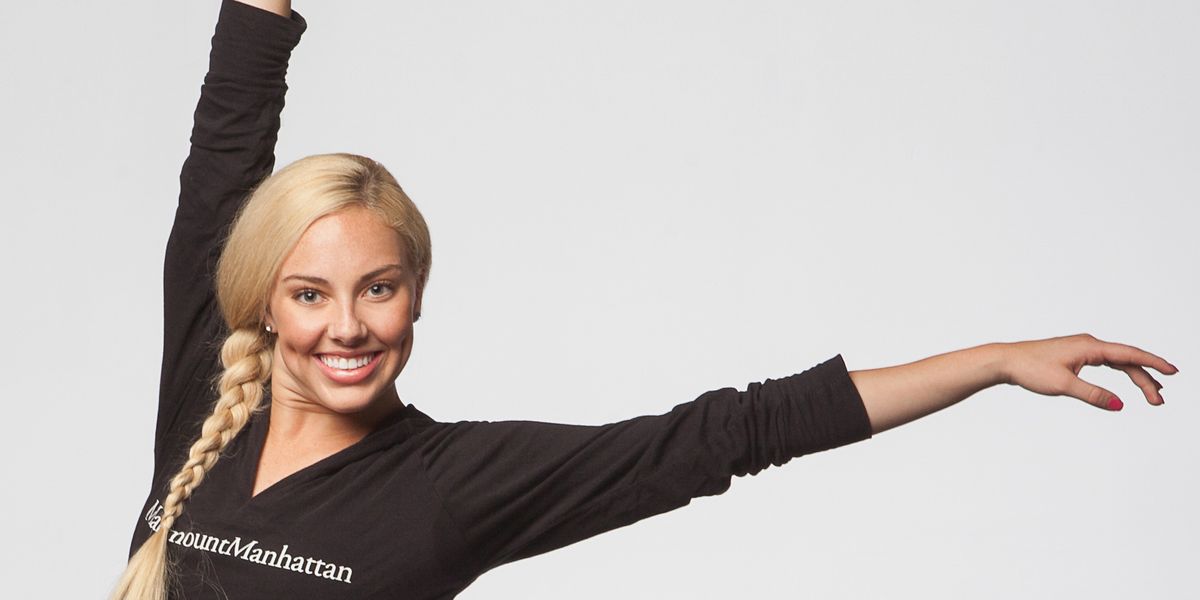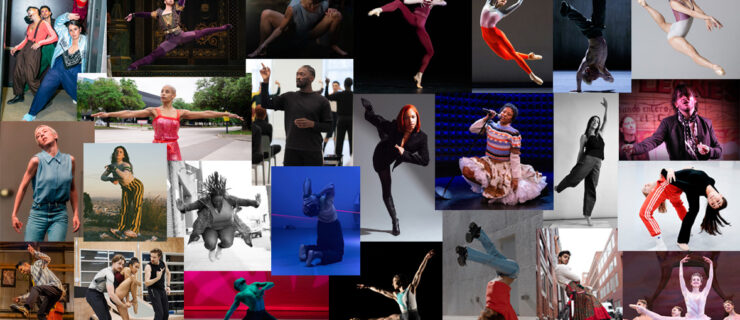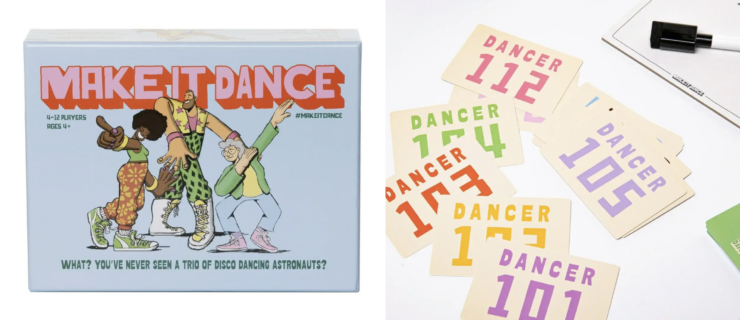University of NYC
My first Friday night at New York University, two second-year dance majors had some of us freshmen follow them through SoHo to a tiny triangular street corner. There was nothing there but a one-story building that looked ready for a demolition crew. I didn’t know where we were or why. Then Savion Glover climbed onto the roof. He began tapping like a crazy man angry at his shoes—and my new classmates and I completely geeked out. Savion was jamming on a rooftop! For free! Just blocks from our school! Living in NYC was going to be awesome.
Some of the best college dance departments are located smack in the middle of the Big Apple, and for good reason. “If you want to immerse yourself in the center of the field, where the newest ideas about dance are being formed, where the best artists are practicing, where you can see a different show every night, NYC is the place to be,” says James Martin, an associate arts professor in NYU’s Tisch School of the Arts dance department. But going to college for dance in NYC is kind of like the Disneyland version of being a professional dancer in the big city: It’s a larger-than-life experience and a much less risky option than arriving on 42nd Street with nothing but your resumé and dance shoes.
Not Your Normal Campus
The first clues that NYC dance departments are unusual are the faces around the studio. These schools pluck the best of the best right out of the Big Apple dance scene: Allegra Kent teaches at Columbia University’s Barnard College; Joe Lanteri is on faculty at The Juilliard School; and the dancers in the Ailey/Fordham BFA Program take class from a whole host of A-list instructors at The Ailey School. (Some students even have Alvin Ailey American Dance Theater company members as their mentors, which means you might find Alicia Graf Mack hanging around the dorms!)
Yes, colleges everywhere bring in high-profile adjuncts and guest artists. But NYC schools can do it more often because those people live just a few subway stops away. “Last year, Larry Keigwin, Chase Brock, Pascal Rioult and Pam Tanowitz set work on us,” says Marymount Manhattan College junior Zoey Anderson. “These are big-time choreographers you want to know. We get to learn their movement and make a real connection with them.” Some schools, including NYU, invite entire NYC-based companies for weeklong teaching residencies. Students meet not just the director but also the dancers, and start to build a network of industry professionals. “Seeing what these companies go through on a daily basis better prepares students for professional life,” says Martin. “They know what’s going to be expected of them.”
And NYC’s resources don’t end there. Choreography and dance-writing courses might integrate local dance performances into the syllabus; dance-history classes can take students to museums or the New York Public Library for the Performing Arts. Through Juilliard’s Educational Outreach programs, junior Corey John Snide has honed his performing and teaching skills in public schools. “It’s not like I’m in a campus in the middle of nowhere,” he says. “Juilliard is my gateway to NYC.”

“I see as many performances as I can afford to. I’ve learned so much about what I like—and don’t like—and where I might want to dance in the future.” —Corey John Snide, junior, The Juilliard School (Photo by Erin Baiano)
Make Your Own Curriculum
In NYC, one of the best parts of going to school is leaving school. You can head to Broadway Dance Center to take the hip-hop classes your program doesn’t offer, or load up on ballet at Steps on Broadway. (Just try not to gawk when you end up next to Wendy Whelan at the barre.) “I’ve been able to keep up my ballroom dancing and to take classes with people like David Parsons so I can learn his style before it’s time to audition,” says Zoey. Some classes can even take the place of an audition: After taking choreographer Marinda Davis’ class at Peridance Capezio Center in 2011, Zoey performed with Davis in showcases around the city.
In addition to dancing, you can build your practical skill sets—and get an insider’s peek behind the scenes. NYC college students’ resumés might boast internships with The PULSE On Tour, American Ballet Theatre and Dance Spirit!
Intro to the Concrete Jungle
Moving to NYC can be overwhelming, even for people who love bright lights and bustling streets. But dancers who start off their big-city experiences in college have the support of a smaller community while they find their footing. “I’m so grateful to have a structured schedule set up for me, rather than just randomly picking up a class here and there,” says Zoey. A college dance department helps guide dancers so they know where to find rehearsal space, how to set up auditions and what resources are available.
Being a student also hooks you up with all-important student deals. “Our teachers always have extra free tickets to see Ailey,” says Ailey/Fordham sophomore Courtney Celeste Spears. “We also got to see Armitage Gone! Dance—and because it was through school, we met the choreographer, Karole Armitage.” College classes may force you to see shows you wouldn’t attend on your own—and possibly discover a company or new style you love.
The biggest perk for many dance majors is the chance to attend auditions while they’re still in school, rather than waiting until after graduation. Fordham students, for example, are allowed to use professional experiences as credit toward their degrees starting junior year. And Juilliard even helps dancers network so they can be invited to auditions. Corey made it to the final round for Newsies last year, but decided to focus on school instead.
The kinds of auditions students go for might change over the course of their four years. “Being here has opened my eyes to possibilities that I didn’t know about,” says Courtney. She’s not alone: The early exposure to NYC’s dance scene often leaves students with entirely different goals than the ones they arrived with as freshmen. “Growing up, it was always just, ‘I want to be famous,’ ” says Corey. “But I’ve realized I love teaching, and I want to use dance to help impoverished kids. College has given me options for how I can make a living and feel fulfilled artistically. I’m not just trying to kick my leg up to my face anymore.”

“I wanted to be in the middle of everything—see it all and be in it all—and surround myself with dancers who are just as driven as I am.” —Courtney Celeste Spears, sophomore, Ailey/Fordham BFA Program (Photo by Erin Baiano)
Is NYC Right for You?
Despite the unique advantages of dancing in NYC, going to college there means sacrificing many of the typical cornerstones of campus life. If you’re looking for grassy quads, a big Greek culture or major sports teams to root for, NYC schools will be a disappointment.
And not every teenager is ready for the pressure or intense pace of day-to-day life in Manhattan. “Some students get overwhelmed and withdraw, and it’s something that wouldn’t have happened if they were in a different environment,” says NYU Tisch School of the Arts associate professor James Martin. “If you need more time to find your confidence—and many artists do—New York can be hard.”
It can also be distracting. Between the shopping, the nightlife and the entertainment, fun times are always just around the corner. Dancers have to resist the temptation to blow off classes or rehearsals for that party or film premiere.
For Courtney Celeste Spears, a sophomore in the Ailey/Fordham BFA Program who came from a small town outside Baltimore, the hardest part was not letting the amount of competition in NYC intimidate her. “It’s easy to look at it and think, ‘The odds are not in my favor,’ ” she says. Or you can take the approach that she’s learned over the past year: “I use the competitiveness to help drive me more than I ever knew was possible.”
The Stats
Ailey/Fordham BFA Program
Degree offered: BFA in dance
Number of applicants: 422 in 2013
Number accepted: 55 admitted and 29 enrolled in 2013
Focus: Core classes include ballet, Horton and Graham-based modern.
Location: Lincoln Center and Ailey’s Hell’s Kitchen headquarters
Training ground: Six current members of Alvin Ailey American Dance Theater came through the BFA program.
Notable alumni: Courtney Henry of Alonzo King LINES Ballet, Jacqueline Burnett of Hubbard Street Dance Chicago, Victoria Andrea Guajardo of MOMIX
Barnard College, Columbia University
Degrees offered: BA, minor or concentration in dance
Number of applicants: There is no separate dance department application or audition. 5,606 students applied to Barnard’s incoming class.
Number in department: 36 majors and 12 minors
Focus: Emphasizes the intellectual and cultural exploration of
dance in a liberal arts setting
Location: Morningside Heights
Sister theater: The department partners with Bill T. Jones’ New York Live Arts
Notable alumni: Michael Novak of Paul Taylor Dance Company, Jamie Scott of the Trisha Brown Dance Company, Anna Schon of Reggie Wilson/Fist & Heel Performance Group
The Juilliard School
Degrees offered: BFA, diploma in dance
Number of applicants: 550–600
Number accepted: 24 (12 men, 12 women) per year
Focus: Aims to produce contemporary dancers by training them equally in ballet and modern
Location: Lincoln Center
Subsidized summer travel: The summer grants program offers funding for student-driven outreach programs—anywhere from Cleveland to Kenya.
Notable alumni: Billy Bell of Cedar Lake Contemporary Ballet, Spenser Theberge of Nederlands Dans Theater 1, Frances Chiaverini of Morphoses
Marymount Manhattan College
Degrees offered: BFA or BA in dance
Number of applicants: 400 on average
Number accepted: 160 admitted; 75 enroll on average
Focus: Because the school emphasizes versatility, daily offerings include ballet, modern and jazz classes, plus tap, pointe or improv twice a week.
Location: Upper East Side
Scholarship help: More than 85 percent of MMC students receive some form of financial assistance.
Notable alumni: Jacob Michael Warren of Pilobolus’ Shadowland, Abby Silva Gavezzoli of Parsons Dance
Pace University
Degree offered: BFA in commercial dance
Number of applicants: 207 in 2013
Number accepted: 57 admitted and 39 enrolled in 2013
Focus: Prepares dancers for professional work onstage, in television and in commercials
Location: Financial District
Showtime: Students have the opportunity to perform in over 50 departmental productions per year.
Notable alumni: Former Miss Teen USA Logan West; Miss Southern NY Madison Embrey; Megan Peterson of the Rockettes tour
Tisch School of the Arts, New York University
Degrees offered: BFA or MFA in dance
Number of applicants: 400–550 BFA candidates
Number accepted: 30
Focus: Trains students for careers in contemporary and classical dance
Location: Greenwich Village
In and out: The program is designed so undergrads can graduate in three years.
Notable alumni: Ian Robinson of Batsheva Dance Company, Christina Dooling of Complexions Contemporary Ballet, Jenn Freeman of Tayeh Dance




